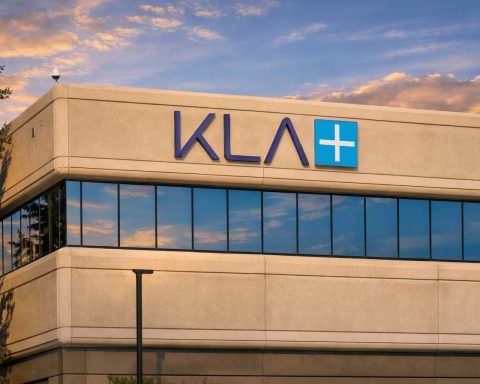Rio Tinto plc (LON:RIO, ASX:RIO, NYSE:RIO) traded close to the top of its 52‑week range on Wednesday, 26 November 2025, as fresh analyst commentary, political trading disclosures and new ESG developments kept the mining giant firmly in the spotlight.
Rio Tinto share price today: near the top of the range
In London, Rio Tinto Group (LON:RIO) traded around GBX 5,435–5,445, leaving it close to recent highs and comfortably above both its 50‑day and 200‑day moving averages. MarketBeat data cites an average 12‑month target price of GBX 5,566.67, with the stock’s one‑year range sitting between roughly GBX 4,024 and GBX 5,662. [1]
On the ASX, Rio Tinto Ltd (ASX:RIO) changed hands near A$133–134 on Wednesday, with Investing.com quoting A$133.37 and a market capitalisation of about A$186 billion and a dividend yield around 4.5%. [2]
In the United States, the NYSE‑listed ADR (RIO) recently traded around US$71, up roughly 20–21% year‑to‑date from about US$58.81 at the start of 2025, according to MarketBeat’s performance data. [3]
From a technical standpoint, traders’ models remain bullish. A fresh report from Traders Union notes that LON:RIO is trading near GBX 5,435, above its 20‑, 50‑ and 200‑day moving averages, with MACD and ADX signalling buyer dominance. Their model suggests “more than 80%” probability of further short‑term upside, though some oscillators flag overbought intraday conditions and warn of a possible near‑term pullback if support around GBX 5,350–5,360 fails. [4]
Analyst ratings: ‘Hold’ in London, ‘Moderate Buy’ in New York
Despite the strong price action, sell‑side sentiment is cautious rather than euphoric.
- A new MarketBeat note today on Rio Tinto Group (LON:RIO) reports a consensus “Hold” rating from six research houses, with four “hold” and two “buy” recommendations and an average 12‑month price target of GBX 5,566.67. [5]
- Separately, a Deutsche Bank flash today reiterated a “Neutral” stance on Rio with an unchanged price target of GBX 5,300, implying only modest downside from current levels and reinforcing the idea that London analysts see limited near‑term upside after the recent rally. [6]
Across the Atlantic, the tone is slightly more constructive:
- For the NYSE ADR, MarketBeat’s summary shows a “Moderate Buy” rating based on 11 analysts, combining 2 strong buys, 3 buys and 6 holds, with a consensus target of US$73 – just a few percent above the current price, suggesting muted short‑term upside in the US as well. [7]
Valuation models, however, span a very wide range:
- A discounted cash flow (DCF) analysis syndicated via Webull/Simply Wall St earlier in November estimated an intrinsic value around US$171.76 per share for Rio Tinto Group, implying roughly a 69% discount to fair value at the time and branding the stock as significantly undervalued on cash‑flow assumptions. [8]
- By contrast, a P/E‑based relative valuation model from ValueInvesting.io puts LON:RIO’s fair value at about £12,503 per share, versus a spot price near £54 (GBX 5,400) – theoretically implying over 130% upside, though that figure is highly sensitive to the peer set and cycle‑adjusted earnings used. [9]
Taken together, fundamental models are far more bullish than most analysts, highlighting both Rio Tinto’s strong cash‑flow profile and the uncertainty around long‑term commodity prices.
Political trading and institutional flows around RIO stock
On the governance and sentiment side, a fresh congressional trading disclosure put Rio Tinto back into US political headlines.
A MarketBeat “instant alert” issued today shows Representative Lisa C. McClain (R‑Michigan) disclosed the sale of between US$1,001 and US$15,000 worth of Rio Tinto (NYSE:RIO) shares from her Charles Schwab 401(k) account. The sale took place on 31 October and was reported on 21 November, alongside similar‑sized disposals in roughly ten other stocks, including Alibaba and BHP Group. [10]
The modest size and “basket” nature of those trades suggest portfolio rebalancing rather than a Rio‑specific call, but such disclosures are increasingly tracked by retail investors as soft sentiment indicators.
Meanwhile, institutional ownership remains relatively low for a mega‑cap miner. MarketBeat pegs institutional holdings around 19.3% of Rio Tinto’s stock, with recent filings showing new positions from funds like Franklin Resources and Foundations Investment Advisors, offset by reductions from others including Rockefeller Capital Management and SG Americas Securities in November. [11]
The message: capital flows around RIO are active but mixed, reflecting debate over where we are in the cycle for iron ore, copper and aluminium.
Decarbonisation: renewable diesel and social impact spending
Today’s news cycle also put the spotlight back on Rio Tinto’s energy‑transition strategy and social footprint.
Renewable diesel trials and net‑zero goals
A long‑form analysis from Discovery Alert, published today, reviews Rio Tinto’s growing use of renewable diesel across its global operations. It highlights: [12]
- A trial at Rio’s Pilbara iron ore operations in Western Australia, which reportedly demonstrated around 27,000 tonnes of annual CO₂ reduction by substituting renewable diesel for conventional fuel in heavy equipment.
- A fully transitioned operation at the Boron mine in California, where all heavy machinery has already moved to renewable diesel.
- A major expansion at Kennecott (Utah, US), where the company projects about 495,000 tonnes of CO₂ reductions per year once renewable diesel is fully deployed in large‑scale copper operations.
The article frames renewable diesel as a “bridge fuel” in Rio Tinto’s pathway to its stated targets of 50% reduction in Scope 1 and 2 emissions by 2030 and net zero by 2050, arguing that drop‑in fuels complement longer‑term electrification and hydrogen projects rather than replacing them.
This dovetails with Reuters reporting earlier in November that Rio’s Kennecott operation has signed a 15‑year virtual power purchase agreement with TerraGen to source renewable electricity from a new Texas wind farm – another plank in decarbonising the group’s North American footprint. [13]
Gender‑based violence funding across Canada
On the social impact side, Rio Tinto yesterday announced C$400,000 in funding for 15 organisations across Canada that support people experiencing gender‑based violence, timed to coincide with the 16 Days of Activism Against Gender‑Based Violence campaign. [14]
Key points from the company’s Montreal release: [15]
- This is the sixth consecutive year of the program, with C$2.335 million committed since 2020.
- Beneficiaries include shelters, counselling centres and advocacy groups in Quebec, British Columbia, Newfoundland and Labrador and the Northwest Territories, among others.
- Rio also highlights internal measures such as additional paid leave, emergency accommodation and financial support for employees affected by domestic or family violence, plus training for colleagues on how to respond safely.
For ESG‑focused investors, these developments reinforce Rio Tinto’s attempt to rebuild trust after earlier reputational setbacks, while also aligning with the governance and “social” metrics used by many institutional screens.
Smelter economics and the Yarwun alumina cutback
Underneath the strong share price, pressure on Rio Tinto’s downstream processing assets is growing.
Reuters reported on 18 November that Rio will cut output at its Yarwun alumina refinery in Queensland by 40% from October 2026, after concluding that building a second tailings facility would require capital that is “not currently economically viable.” [16]
Key details from that report: [17]
- The cut will reduce alumina output by about 1.2 million tonnes per year (around 3% of ex‑China supply), extend Yarwun’s life to 2035, and remove approximately 180 roles from a 725‑strong workforce, though customer supply is expected to be maintained.
- The decision comes amid two‑year‑low alumina prices and high Australian power and labour costs, which have already forced government support packages for other smelters such as Glencore’s Mount Isa copper smelter.
A column on MacroBusiness today frames these struggles within a broader policy debate. It notes that Trafigura, Glencore and Rio Tinto are all negotiating with Australian federal and state governments over financial support for loss‑making smelters, including Rio’s majority‑owned Tomago aluminium smelter in New South Wales, which the company has flagged for possible closure in 2028 due to energy costs. [18]
Rather than subsidising individual plants, the piece argues that cutting domestic gas prices via a levy on high‑priced LNG exports could lower electricity costs across the economy and improve smelter viability more broadly – a reminder that Rio’s downstream future in Australia is closely tied to national energy policy.
Contracts, operations and supply‑chain positioning
Away from the macro headlines, Rio Tinto continues to lock in operational partnerships:
- SRG Global (ASX:SRG) announced today that it has been appointed to Rio Tinto’s Sustaining Capital Master Construction Agreement Panel in the Pilbara, covering bulk earthworks and civil services, as part of A$650 million in new contracts with blue‑chip industrials. [19]
The SRG appointment underscores that Rio is still investing in infrastructure around its core Pilbara iron ore business, even as it scrutinises capital spending in more marginal processing assets like Yarwun.
Strategic pressure: activists, Chinalco and the copper race
In the background, strategic questions about Rio Tinto’s structure and growth path are intensifying, setting the stage for the company’s upcoming Capital Markets Day in early December.
- On 3 November, Reuters revealed that activist fund Palliser Capital has stepped up its campaign, urging Rio Tinto to launch a “now or never” counter‑bid for Teck Resources and to unify its dual London‑Sydney listing before later spinning off a dedicated base‑metals company focused on copper, aluminium and zinc. [20]
- Palliser argues that such a move would diversify Rio beyond iron ore, unlock hundreds of millions in potential synergies and create a “copper champion” better positioned for the energy transition – though shareholders overwhelmingly rejected a previous proposal to review the dual‑listed structure at Rio’s 2025 AGM. [21]
Rio, for its part, has responded that it remains focused on maximising shareholder value under the current structure, promising more detail at Capital Markets Day.
At the same time, another Reuters exclusive in October reported that Rio is exploring an asset‑for‑equity swap with long‑time shareholder Aluminium Corporation of China (Chinalco), which holds about 11% of the group. [22]
Under that scenario: [23]
- Chinalco could swap part of its stake for interests in projects such as Simandou in Guinea and Oyu Tolgoi in Mongolia, or potentially Rio’s titanium business, which is already under strategic review.
- Reducing Chinalco’s stake by a few percentage points would loosen governance constraints, potentially freeing Rio to resume share buybacks and pursue larger M&A deals more flexibly.
Layered over this is the wider copper M&A battle: the Financial Times has reported that BHP has renewed its pursuit of Anglo American just weeks before Anglo’s shareholder vote on a US$57bn combination with Teck, prompting speculation that other majors – including Rio Tinto – could eventually be drawn into the contest for high‑quality copper assets. [24]
For Rio shareholders, the implication is that strategic clarity on copper, its dual listing and the Chinalco relationship may be just as important as near‑term production guidance.
How today’s news fits together for Rio Tinto investors
Pulling all of this together, the 26 November 2025 news flow around Rio Tinto (RIO) tells a multi‑layered story:
- Price & sentiment: The stock is trading near one‑year highs in London and has delivered strong double‑digit gains year‑to‑date, with short‑term technicals pointing to continued momentum – but with analysts generally calling for “Hold” or modest upside rather than a runaway bull case. [25]
- Fundamentals vs. expectations: Cash‑flow‑based valuations from platforms like Simply Wall St suggest material undervaluation, while mainstream broker targets cluster not far above the current price. That gap reflects uncertainty over long‑term commodity prices, capital allocation and political risk in key jurisdictions. [26]
- ESG & licence to operate: Renewable diesel trials, long‑dated renewable power deals and increased funding for anti‑violence organisations in Canada show Rio trying to reposition itself as a leader in responsible mining, which matters for institutional ESG mandates and access to certain pools of capital. [27]
- Operational risks: The Yarwun cutback, pressure on Tomago and broader debates about Australian energy policy highlight the headwinds facing domestic processing, even as upstream iron ore and copper portfolios remain robust. [28]
- Strategic optionality: Activist pressure from Palliser, potential transactions with Chinalco and the shifting copper M&A landscape mean Rio could look very different in a few years – perhaps more copper‑heavy, with a simplified structure and expanded buyback capacity, or perhaps still cautious if management resists large, complex deals. [29]
For now, Rio Tinto sits at the intersection of three big themes:
- The iron ore and copper cycle, which drives near‑term earnings.
- The energy transition, which shapes its decarbonisation capex and ESG profile.
- Corporate structure and strategy, which will determine how much of that value ultimately flows to shareholders.
Investors watching RIO after today’s headlines may want to focus on:
- What guidance and strategic detail Rio provides at its Capital Markets Day in early December.
- How commodity prices, especially iron ore and copper, evolve from here (SP Angel today quoted iron ore 62% Fe at ~US$106.6/t and copper near US$10,883/t). [30]
- Whether Australian policymakers opt for direct smelter subsidies, energy‑price reforms, or a mix of both, which will shape the future of assets like Tomago and Bell Bay. [31]
As always, none of this constitutes investment advice – but on 26 November 2025, Rio Tinto looks like a miner whose share price already reflects a lot of good news, even as big strategic and policy decisions still lie ahead.
References
1. www.marketbeat.com, 2. www.investing.com, 3. www.marketbeat.com, 4. tradersunion.com, 5. www.marketbeat.com, 6. www.marketscreener.com, 7. www.marketbeat.com, 8. www.webull.com, 9. valueinvesting.io, 10. www.marketbeat.com, 11. www.marketbeat.com, 12. discoveryalert.com.au, 13. www.reuters.com, 14. www.riotinto.com, 15. www.riotinto.com, 16. www.reuters.com, 17. www.reuters.com, 18. www.macrobusiness.com.au, 19. mining.com.au, 20. www.reuters.com, 21. www.reuters.com, 22. www.reuters.com, 23. www.reuters.com, 24. www.ft.com, 25. www.marketbeat.com, 26. www.webull.com, 27. discoveryalert.com.au, 28. www.reuters.com, 29. www.reuters.com, 30. www.share-talk.com, 31. www.reuters.com







